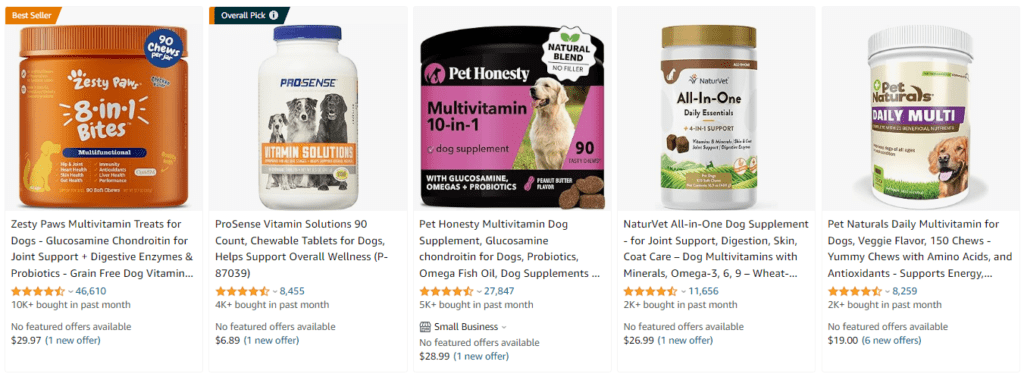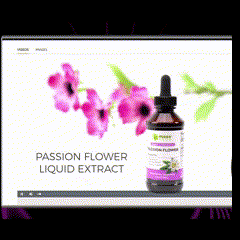
Amazon FBA Tips: Increase Your Earnings with What You Already Sell
If you’ve got a product on Amazon that’s selling like THIS:

and it should be selling like THIS…

you’re in the right place.
Because in this article, I’m gonna show you how to make a load more money selling exactly what you’re already selling.
You’re gonna learn 7 Amazon FBA tricks to increase the conversion rate on your Amazon store to get more sales. And one of these is something that almost every Amazon seller neglects. And only the best sellers are really nailing all of them.
But first, let me show you just how easy it is to make an extra $6000 a month…
Amazon FBA Tips: What Is CVR And Why It Matters
So to make sure we’re on the same page, what is a conversion rate on an Amazon store?
A conversion rate on Amazon is the percentage of people who see your product page and actually buy something. And to work it out, you take your total number sales, and then divided that by the total number of people who visit your Amazon product page:
CVR = Total number of sales / Total number of page visits
(or you can also find it in the Reports section in your Amazon Seller Central account)
So if you’ve got 10k visitors to your Amazon listing with a 3% CVR, that means that 300 of those 10k people end up buying something from you.
And if that CVR jumped to 5%, that’d mean you’ve now got 500 people buying stuff.
10k visitors * .03 = 300
10k visitors * .05 = 500
So if you’re selling a product that costs $30, just a 2% increase would net you an extra $6000 a month in sales.
($30 x 500 units = $15,000) – ($30 x 300 units = $9,000) = +$6000
So just imagine what a jump to 8% or 10% or 15% CVR would do.
But it’s actually even better than that, because Amazon uses your CVR to determine how high up to rank you in search results.
So it’s like a flywheel: a higher conversion rate → leads to better organic placement → which leads to more traffic → which leads to even more sales.
And I’m guessing you wouldn’t mind a few extra grand a month.
So let’s run through these 7 quick tips/strategies to blow the roof off your CVR… starting with one that almost all sellers overlook…
Amazon FBA Tip 1: Get in-depth feedback on your listing
You probably check the mirror before you leave the house (and if not, maybe you should). And if you’re heading somewhere fancy or somewhere where your appearance might be a little more important, like a job interview, you go even farther and ask someone else for their opinion.

But for some reason, most Amazon sellers neglect to do this with their Amazon product listings.
And this is tip #1: Getting in-depth feedback on your listing
So the way most people get feedback is by creating their Amazon listing and seeing what happens when people arrive.
If you’re getting sales, that’s good feedback. If sales are low, that’s bad feedback. And if no one’s arriving on your product page, then you’ve got a whole other kind of problem.
So obviously what actually happens on your product listing page is what matters the most. But that’s not the only way you should be finding out what people think about your listing.
What not enough people do is test out their listing with their target customers through good market research.
One way you can do this is with a service like Intellivey.net. It’s a service we’ve used and recommend where you can get feedback from customers that’ll optimize your product listings and get more sales. And they have different payment plans depending on what you need.
And this is also something we help people with in the Honest FBA community, where we’ve got dozens of active, smart Amazon sellers helping each other with things like this. If you wanna learn more about the community, here’s the link for you.
Amazon FBA Tip 2: Optimize for mobile
But before you do, think about this…
When you want to buy something, how often do you have your phone in your pocket? Always, right?

And that’s why around half of all Amazon shoppers shop from their phones.
But your Amazon store doesn’t look the same on a phone as it does on a computer.
And that brings us to tip number 2: Optimize for mobile.
When you create your Amazon listing, you do it from your desktop where you’ve got lots of screen to see at once.
So you see your store from the eyes of a desktop shopper. But too many Amazon sellers stop there, thinking they’ve got a good looking store. And they might… for desktop shoppers.
But you’ve also gotta make sure it looks good on mobile. And there are a few big differences on mobile that you need to keep your eye on.
1) First off, there’s a lot less space for text on mobile. (Duh). So that means longer phrases get cut off earlier. And that means you really need to front-load your keywords in your title and bullets so a shopper sees those no matter where they’re looking from.
2) Second, there are differences in the layouts. On mobile, for example, you only see the first 2 or 3 bullets. So you need to make sure those first couple of bullets really count.
Of course you should be front-loading keywords and putting your best points first for desktop too… but don’t neglect to check that your key info is instantly visible on your phone.
3) And a third big difference is the simple fact that all the text on mobile is smaller and that means your text is even harder to read, and all the suggested competitor product images are even easier to see…
… and that means that you need to take advantage of every trick in the book to get even more images of your products onto your product page…
… and in another tip later in this article I’m gonna show you exactly how you can add even more product images than the maximum 9 photos that Amazon allows.
Amazon FBA Tip 3: Optimize Images
But before we get to that, we need to make sure that the images you already have are good enough to grab attention and get people into your listing.
And to do that, you need to take a quiz…
So answer quickly: what catches your eyes on this page… ?

And this one… ?

And this one… ?

You got it. On Amazon, people search, and purchase, with their eyes… which means that your images need to be jumping off the page like those ones you just saw.
So let’s look at tip 3: how you should be Optimizing your images.
You wanna start with your Hero image, which is what people see in search results and immediately when landing on your page. Use a professional photographer, and crop out all the white space around your image so your product takes up more space on the page.
And since your Hero image can only show your product and things that come with it, you wanna make sure you’re thinking about this from the very beginning, when you start developing your product and packaging.
And the rest of your images need to be top-notch too. Professional-looking photos, no shitty photoshop.
When you see stuff like this, it just screams: “I couldn’t be bothered to put the time or money into good images, and my product’s probably shite too.”


So think of your listing photos like telling a story. It’s like you’re grabbing a shopper’s hand and showing them step by step why they’re gonna be super happy buying your product, instead of someone else’s.
So look at how this product does it…you can see beautiful listing, images are crisps, and it makes me wanna buy it.

So put your product benefits and features in order of importance, so the things they care about most you show them first.
Make sure each image communicates something different. Show lifestyle or action photos of people using the product. You wanna communicate the size of your product, materials, anything they’re gonna be wondering about.
And don’t overwhelm people with too much info. Make sure each image in your listing focuses on a maximum of 2 benefits or main points.
You might also think about using a site like PickFu to test your images with real people to see how they respond. Because your listing images aren’t something you want to leave to chance.
And you also don’t want your listing images to be the last pictures they see from you. And this brings us to what I hinted at before… you need to add more big beautiful images than just the 9 you’ve got at the top.
And the way you do that is…
Amazon FBA Tip 4: Adding A+ premium content
So on some product pages, when you scroll down, past the bullets and recommendations for items frequently purchased together, you’ve surely come across those big blocks of content that show big colorful photos and videos and well-designed product comparison tables.
This is A+ content.
And this is something you definitely wanna have on your product page that’ll really help increase your conversions. And apart from helping out on mobile like we just talked about, there’s a lot of reasons why:
- It lets you highlight product features, or address common questions in ways you can’t do in the rest of your listing… like with different carousels and image hotspots and comparison tables and Q&A accordion modules. And since images are the biggest thing that make people buy, more high-quality images means more sales.
- It also makes your brand look more professional and trustworthy, and lets you really stand out from other competitors in your niche.
- And the more space you take up with A+ content, the longer someone has to scroll to see competitor listings below. Which means people see more of you and less of, well, those other guys.
It’s basically gonna make your product listing look a lot more interesting, and get you a lot more sales.
Now to get A+ Premium content, you gotta have your brand registered with Amazon via Brand Registry. It is free to apply for and it’s easy to get approved for. So make sure you do that.
And apart from the benefits I just mentioned, it also gives other tools and analytics where you can dive into keyword insights and all kinds of things.
And with Brand Registry you can build out your brand store—which is where people go when they click this “Visit the [brand] store” link at the top of your product pages. This is a great place to showcase your brand, and it’s really good if you sell multiple products because it lets customers see all your products in one place, with no competition in sight.
It looks great, it helps increase conversions, and it’s likely to increase your Average Order Values (AOV) too.
So it’s pretty much all upside and something you definitely need to do if you wanna get more sales.
Now moving on to our next tip.
Amazon FBA Tip 5: Prioritizing Video content
So video has been undeniably proven to boost sales, improve conversions, and decrease product returns… because it gives people more clarity and confidence about what they’re buying.
And our next conversion tip is all about prioritizing video.
And there are lots of ways to do great product videos, but let’s start with this one by Maxx Herb, who’s in the super competitive herbal supplements market. When they started adding videos to their products, they saw a 25% increase in total sales, and a 23% decrease in total advertising costs (TACoS). – I’d take that.

So, notice how they do their video… they show the product, they say why it’s better than competitors, they show it being used in action so you can see the size of the bottle and the liquid inside… they highlight benefit after benefit in a really simple way…
And this is one example, but there are lots of ways to do great videos. You can do product highlights, influencer reviews, unboxing videos, installation and demo videos…
And one we really like because we’ve seen it really improve conversion rates is doing good USER GENERATED CONTENT (UGC)-style videos. It adds great social proof, and it’s not gonna break the bank.
And one place we highly recommend for awesome quality UGC style videos is Billo.app.
You can also check places like Fiverr where you can get a decent product video made for $100-300.
And one more thing that’s changed that you should know about… Before, you had to be a brand-registered seller to add video to your product pages.
But now anyone who’s been selling on Amazon for more than 3 months can add video too, even if you don’t have Brand Registry – which you definitely should have anyway so you can create that killer A+ content we just talked about.
And if you’ve done everything we’ve already talked about, you should start seeing those numbers going up. But there’s still more you can do…
… IF you can answer this simple question…
Amazon FBA Tip 6: Experiment with Pricing & Promotion
What are the biggest shopping days on Amazon?
If you answered Prime Days, you’re allowed to stick around for this conversion tip.
No, the tip isn’t “Prime Day”, but Prime Day holds the clue, and that is… sales and pricing.
For most products, consumers are price sensitive. And they also love a deal.
And Amazon offers sellers different ways to do this. There are 7-day deals, and lightning deals, and coupons you can add to your listing. Now I’m not gonna get into the details of each here, but each works a little differently and has a different cost.
Yes, you have to pay Amazon to run a sale. And this might be anywhere from $0.60 cents to each coupon redeemed to $350 or more for some deals.
So you wanna do the math first to make sure it makes sense for you. But it’s definitely an option that boosts conversions for many sellers.
And more generally, you should occasionally revisit your pricing strategy to make sure your product is optimally priced.
Are you positioning yourself as a premium product (like Hexclad’s successfully done with cookware), are you trying to be the cheapest on the block?
Now in general trying to be the cheap guy isn’t your best move. But there are times when you do wanna keep your price down, especially when launching a new product.
But whatever your approach, a good rule of thumb is to always be priced within 20-25% of the top sellers.
And by this point, you’ve got a banger listing with incredible images and product videos. You’ve got feedback from the outside, you look amazing on mobile, you’re experimenting with pricing, and your Amazon store page should already be converting better…
Amazon FBA Tip 7: Optimising your KWs and PPC campaigns
But there’s something else you can do, and I’ll tell you what it is… but first, I’d like to invite you to a rave…
So imagine I sent out 1,000 invitations for a banger rave. A party where everyone was single, the place was full of drinks, food was brought straight to your table, and there’s gonna be a lot of single people in the building, all for just $40… just pay at the door.
Sounds amazing, right? So you go, cash in hand, and the taxi driver leaves you at… a nursing home. O… K… so pretty much everyone is single, but you’d probably get the f*ck out there pretty damn quickly.
Now, as odd as this sounds, this is what a lot of Amazon sellers are doing without even realizing it.
They target a lot of fancy keywords that drive a ton of traffic… but when people arrive at the listing, they don’t find what they expect. So they bounce, and conversion rates tank (wah-wah).
And this is another huge opportunity: Optimising your KWs(KEYWORDS) and PPC(PAY-PER-CLICK) campaigns.
You have to pay attention to the quality of the people you’re bringing to your site.
Because driving a bunch of traffic from poorly targeted campaigns with people that aren’t really interested in buying your product doesn’t just lower your PPC conversion rate. It’s worse than that.
Cause you’re not only spending money on ads that don’t convert, you’re also dragging down your organic rankings by showing Amazon that people don’t want your product.
So for example, if you sell disco balls and you’re getting clicks from people wanting to buy ‘tight bulging disco pants’, Bezos is gonna see your low conversion rate and hide your sparkling balls from the search results page. – because let’s be honest, he was the one searching for those tight disco pants.

So keep an eye on KWs that are under performing, and make sure you’re regularly optimising your PPC campaigns so that you aren’t wasting clicks on irrelevant keywords, and only bringing people to your page with KWs that match what you’re selling.
It’s pretty much impossible to overstate the importance of doing good KEYWORD RESEARCH for both your product listing and for your PPC campaigns. It’s possibly the most important thing you can master to keep your conversion rate high.
And if you need some help with this, check out some of my other articles on researching products (Here’s one: Product Niches on Amazon) and more.
If you want to learn how you can create an Amazon FBA business yourself, then check out my free training where I’ll teach you everything you need to launch your first product on Amazon and scale to $5,000+ in monthly profit.
Or if you’re ready to begin your journey and want to start with the best chances of success, apply to become a member of HonestFBA’s training programme where you’ll receive guidance & support from our team of 7-figure Amazon FBA seller experts whenever you need it.





